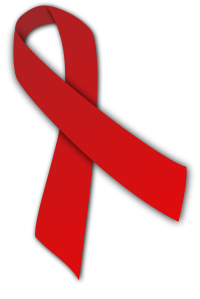
Photo from wikipedia
To compare arterial inflammation (AI) between people living with HIV (PLWH) and uninfected people as assessed by 18F-Fluorodeoxyglucose (18F-FDG)-positron emission tomography (PET). We prospectively enrolled 20 PLWH and 20 uninfected… Click to show full abstract
To compare arterial inflammation (AI) between people living with HIV (PLWH) and uninfected people as assessed by 18F-Fluorodeoxyglucose (18F-FDG)-positron emission tomography (PET). We prospectively enrolled 20 PLWH and 20 uninfected people with no known cardiovascular disease and at least 3 traditional cardiovascular risk factors. All patients underwent 18F-FDG-PET/computed tomography (CT) of the thorax and neck. Biomarkers linked to inflammation and atherosclerosis were also determined. The primary outcome was AI in ascending aorta (AA) measured as mean maximum target-to-background ratio (TBRmax). The independent relationships between HIV status and both TBRmax and biomarkers were evaluated by multivariable linear regression adjusted for body mass index, creatinine, statin therapy, and atherosclerotic cardiovascular 10-year estimated risk (ASCVD). Unadjusted mean TBRmax in AA was slightly higher but not statistically different (P = .18) in PLWH (2.07; IQR 1.97, 2.32]) than uninfected people (2.01; IQR 1.85, 2.16]). On multivariable analysis, PLWH had an independent risk of increased mean log-TBRmax in AA (coef = 0.12; 95%CI 0.01,0.22; P = .032). HIV infection was independently associated with higher values of interleukin-10 (coef = 0.83; 95%CI 0.34, 1.32; P = .001), interferon-γ (coef. = 0.90; 95%CI 0.32, 1.47; P = .003), and vascular cell adhesion molecule-1 (VCAM-1) (coef. = 0.75; 95%CI: 0.42, 1.08, P < .001). In patients with high cardiovascular risk, HIV status was an independent predictor of increased TBRmax in AA. PLWH also had an increased independent risk of IFN-γ, IL-10, and VCAM-1 levels.
Journal Title: Journal of Nuclear Cardiology
Year Published: 2021
Link to full text (if available)
Share on Social Media: Sign Up to like & get
recommendations!